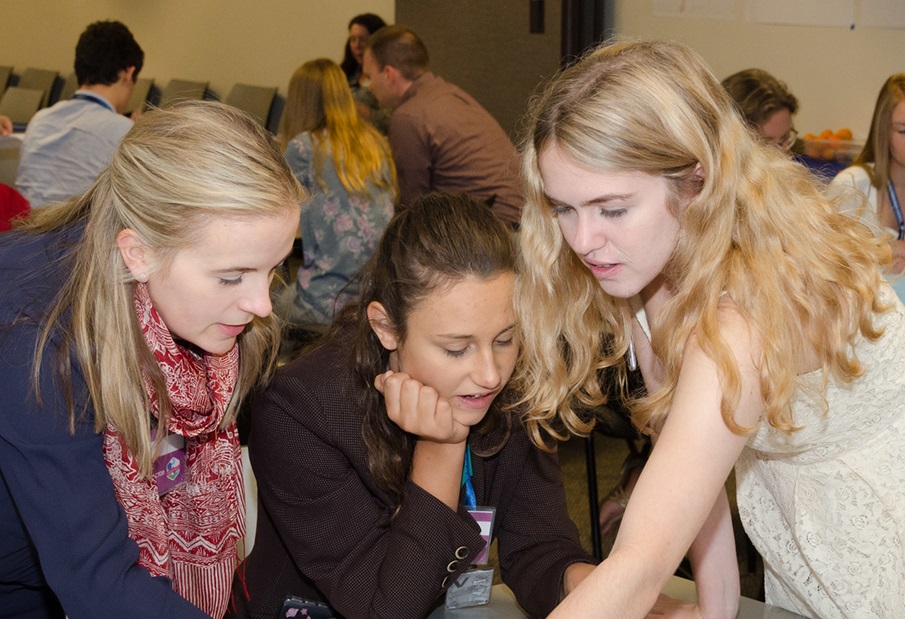Disaster planning, response and recovery efforts must consider the unique needs and abilities of children, who make up roughly a quarter of the U.S. population.

Children Are Positive Influencers - Children can effectively bring the message of preparedness home to their families.

Children Can Become Leaders - Participating in youth preparedness programs empowers children to become leaders at home and in their schools and communities.

Children Can be Confident During an Emergency - Children who are prepared experience less anxiety and feel more confident during actual emergencies and disasters.
Youth preparedness and including youth in emergency management is an essential part of engaging the whole community. As you and your organization prepare for, respond to and recover from disasters, use our resources to explore how you can provide services that assist youth and families with children.
Learn More at Ready.gov/Kids
Start a Youth Preparedness Program
Anyone can start a youth preparedness program, or join an existing one.

Youth Preparedness Council
FEMA's Youth Preparedness Council (YPC) brings together youth leaders interested in supporting disaster preparedness and making a difference in their communities by completing disaster preparedness projects nationally and locally.
Learn More about YPC
Browse the Catalogue
The Youth Preparedness Catalogue is a great place to start if you are looking to implement a youth preparedness program or activity.
Building a youth preparedness program takes a lot of work. However, many resources are available to help you with the process. We’ll walk you through seven steps to implementing a youth preparedness program, and provide checklists and workbooks to help along the way. Many of these resources are available in both Spanish and English.
Why Youth Preparedness?
Children make up about 25 percent of the population of the United States and are the future of our communities. While they face unique vulnerabilities, they can also play an important role during emergencies. However, many programs do not consider children in their planning. It is important that children know what to do in an emergency and that all disaster planning, preparedness, response, and recovery efforts include children’s unique needs and abilities.
Getting Started
Youth preparedness is important to the resilience of any community. As the leader of a youth preparedness program, you are supporting the preparedness effort within your community.
Downloads
- Youth Preparedness Catalog: Disaster Preparedness Education Programs and Resources
- Implementing a Community-Based Program
- Youth Preparedness Program Implementation Checklist
- Youth Preparedness Program Implementation Workbook
Funding
To create a successful program, you will need the proper resources. This funding guide outlines a four-step approach to securing funding, including identifying the resources you need, engaging potential funders and keeping records of donations.
Funding Guide for Youth Preparedness Programs
Risk Management
There are risks and liabilities to consider when putting together a youth preparedness program—just as there would be with any other program or activity. These documents present an approach for developing a risk management plan.
Guide to Risk Management for Your Preparedness Programs
Additional Resources
Browse emergency operations plans (EOPs), reunification guidance and tools, and other resources to support emergency managers and organizations responsible for the temporary care of children and youth. These organizations may include healthcare, childcare, educational and juvenile justice residential facilities.
Planning
- Emergency Support Function #6 – Mass Care, Emergency Assistance, Temporary Housing, and Human Services Annex
- Commonly Used Sheltering Items, September 2022
Fact Sheets
- Student Affected by Presidentially Declared Disasters
- U.S. Department of Education & FEMA Public Assistance Guidance for Schools and Institutions of Higher Education
Training
Policy
There are national policies and policy guidance in place to support your organization’s preparedness efforts and continued provision of services before, during, and after disasters. While building your youth preparedness program, you may reference:
Helping Children Cope
Disasters can sometimes leave children and teens feeling frightened, confused and insecure. Their responses can be quite varied. Learn about helping children cope with their emotions on Ready.gov.


